|
Radschool Association Magazine - Vol 27 Page 8 |
|
Privacy Policy | Editorial Policy | Join the Association | List of Members | Contact us | Index | Print this page |
|
|
|
Progress??
Rod Faux sent us this, it shows the huge advances in memory “chips”. The enormous spinning disc has the capacity to store 1 GB of data as does the small chip held in the fingers. And all in 20 years………we can but wonder what will things be like in another 20 years.
|
|
|
|
|
|
My wife sat down on the couch next to me as I was flipping channels. She asked, 'What's on TV?' I said, 'an inch of dust!!' And then the fight started...
|
|
The end of the DC3.
Those remarkably clever pollies that
run the EU have grounded the old DC3 because of health and safety
concerns.
This is the memorable description by Captain Len Morgan (right) (1923-2005), a former pilot with Braniff Airways, of the unique challenge of flying a Douglas DC-3.
"During it’s day, the old girl groaned, it protested, it rattled, it ran hot, it ran cold, it ran rough, it staggered along on hot days and scared you half to death. Its wings flexed and twisted in a horrifying manner, it sank back to earth with a great sigh of relief. But it flew and it flew and it flew".
The DC-3 served in World War II, Korea and Vietnam and was a favourite among pilots. For more than 70 years, the aircraft known through a variety of nicknames, the Doug, the Dizzy, Old Methuselah, the Gooney Bird, the Grand Old Lady, but which to most it is simply the Dakota, has been the workhorse of the skies. With its distinctive nose-up profile when on the ground and extraordinary capabilities in the air, it transformed passenger travel and served in just about every military conflict from World War II onwards.
Now the Douglas DC-3, the most successful plane ever made, which first took to the skies just over 30 years after the Wright Brothers' historic first flight, is to carry passengers in Britain for the last time. Romeo Alpha and Papa Yankee (below), the last two passenger-carrying Dakotas in the UK, are being forced into retirement because of --- yes, you've guessed it --- health and safety issues.
Their owner, Coventry-based
Air Atlantique, has reluctantly decided it would be too expensive to
fit the required emergency escape slides and weather-radar systems
required by new European rules for their 65-year-old planes, which served
with the RAF during the war. The most asinine ruling ever dreamed up by a
nightmare bureaucracy!!! especially the part requiring "escape slides". On
its belly, you can step down from the aircraft floor to the ground. The
end of the passenger-carrying British Dakotas is a sad chapter in the
story of the most remarkable aircraft ever built, surpassing all others in
length of service, dependability and achievement.
It has been a luxury airliner, transport plane, bomber, fighter and flying hospital and introduced millions of people to the concept of air travel. It has flown more miles, broken more records, carried more passengers and cargo, accumulated more flying time and performed more 'impossible' feats than any other plane in history, even in these days of super-jumbos that can circle the world non-stop.
Indeed, at one point, 90 percent of the world's air traffic was operated by DC-3s. Click on the print at right for a bigger view.
More than 10,500 DC-3s have been built since the prototype was rolled out to astonished onlookers at Douglas's Santa Monica factory in 1935.
With its eagle beak, large square windows and sleek metal fuselage, it was luxurious beyond belief, in contrast to the wood-and-canvas bone shakers of the day, where passengers had to huddle under blankets against the cold.
|
|
I tried to talk my wife into buying a case of VB for $39.95. Instead, she bought a jar of cold cream for $49.95. I told her the beer would make her look better at night than the cold cream would. And then the fight started....
|
|
Even in the 1930s, the early Dakotas had many of the comforts we take for granted today, like on-board loos and a galley that could prepare hot food.
Early menus included wild-rice pancakes with blueberry syrup, served on bone china with silver service. For the first time, passengers were able to stand up and walk around while the plane was airborne. But the design had one vital feature, ordered by pioneering aviator Charles Lindbergh, who was a director of TWA, which placed the first order for the plane. The DC-3 should always, Lindbergh directed, be able to fly on one engine.
Pilots have always loved it, not just because of its rugged reliability but because, with no computers on board, it is the epitome of 'flying by the seat-of-the-pants'. One aviator memorably described the Dakota as a 'collection of parts flying in loose formation' and most reckon they can land it pretty well on a postage stamp. As Len Morgan says: 'The Dakota could lift virtually any load strapped to its back and carry it anywhere and in any weather, safely.'
It is the very human scale of the plane that has so endeared it to successive generations. With no pressurization in the cabin, it flies low and slow. And unlike modern jets, it's still possible to see the world go by from the cabin of a Dakota. (The name, incidentally, is an acronym for Douglas Aircraft Company Transport Aircraft.) From its windows, you see the features of the earth, curves of mountains, colours of lakes, cars moving on roads, ocean waves crashing on shores and cloud formations as a sea of popcorn and powder puffs.' The DC-3 was not pressurized, it leaked badly, light showers outside became moderate to heavy showers inside. Experienced pilots carried, in their flight bag, half of a clear plastic shower curtain to cover their laps which keep approach plates and one’s pants dry. You could always tell a DC-3 pilot by his shoes, the windshield wipers operated by hydraulic motors and they dripped hydraulic fluid on your shoes.
|
|
My wife asked me if a certain dress made her butt look big. I told her not as much as the dress she wore yesterday And then the fight started.....
|
|
Flying over mountains in winter you
encountered a lot of ice. The props and windshield were de-iced wirh
alcohol. The DC-3 could carry a lot of ice as long as the props were
clean. When you got into icing conditions, to conserve alcohol, you would
wait until she began to slow down then turn on the prop alcohol, one blade
would
But it is for heroic feats in military service that the legendary plane is most distinguished.
It played a major role in the invasion of Sicily, the D-Day landings, the Berlin Airlift and the Korean and Vietnam wars, performing astonishing feats along the way. When General Eisenhower was asked what he believed were the foundation stones for America's success in World War II, he named the bulldozer, the jeep, the half-ton truck and the Dakota.
When the Burma Road was captured by the Japanese, and the only way to send supplies into China was over the mountains at 19,000ft, the Chinese leader Chiang Kai-shek said: 'Give me 50 DC-3s and the Japanese can have the Burma Road. In 1945, a Dakota broke the world record for a twin engine aircraft flying on one engine, travelling for 1,100 miles from Pearl Harbour to San Diego, with just one engine working. Another in RNZAF service lost a wing after colliding mid-air with a Lockheed bomber. Defying all the rules of aerodynamics and with only a stub remaining, the plane landed, literally, on a wing and a prayer at Whenuapai Airbase.
Once, a Dakota pilot carrying paratroops across the Channel to France, heard an enormous bang. He went aft to find, as well as a dozen or so terrified troops, that half the plane had been blown away, including part of the rudder. With engines still turning, he managed to skim the wave-tops before finally making it back to safety. Another wartime Dakota was rammed by a Japanese fighter that fell to earth, while the American crew returned home in their severely damaged, but still airborne plane and were given the distinction of 'downing an enemy aircraft'. Another DC-3 was peppered with 3,000 bullets in the wings and fuselage by Japanese fighters. It made it back to base, was repaired with canvas patches and glue and then sent back into the air.
|
|
My wife and I are watching Who Wants To Be A Millionaire while we were in bed. I turned to her and said, "Do you want to have sex?" "No," she answered. I then said, "Is that your final answer?" She didn't even look at me this time, simply saying "Yes." So I said, "Then I'd like to phone a friend." And that's when the fight started....
|
|
During the evacuation of Saigon in
1975, a Dakota crew managed to cram aboard 98 Vietnamese orphans, although
the plane was supposed to carry no more than 30 passengers. In addition to
its rugged military service, it was the DC-3 which transformed commercial
passenger flying in the post-war years. Easily
But!!! - The DC-3's record has not always been perfect.
After the war, military-surplus Dakotas were cheap, often poorly maintained and pushed to the limit by their owners. Accidents were frequent.
Nearly three-quarters of a century after they first entered service, it's still possible to get a Dakota ride somewhere in the world – but soon, unfortunately, not so in the UK..
Bill Baggett’s recollections.
Bill Baggett flew DC3’s in the RAAF for many years, with tours to Vietnam and Butterworth. He shares with us one of his more memorial experiences in the old Gooney…
“With regard to the Gooney, one of my best stories about flying them involves operating out of Pearce in the late 1960's. Chris Rampant was my navigator there, but I am not sure if he was involved in this particular exercise. The then OC of RAAF Pearce had made friends with some folk down in Margaret River, and had driven down to visit then on a couple of occasions. After one such trip he called me into his office and said that he was fed up with driving down there, and as there was a crop duster strip nearby, wanted me to take the DC-3 down and see if I could land there. As God’s word was my command, I saddled up, taking the CO Wing Commander of Base Squadron as my co-pilot as a bit of protection, and sallied forth.
They confirmed they had access to a bull dozer, and I asked them to remove the dead tree on approach and to give me a bit more room through the trees at the hill top. I measured the width of the strip and found it was only two feet wider than the DC-3's undercarriage. Take-off was up the hill, through the trees and down the other side getting airborne about 100 feet from the end of the strip (I refuse to call it a runway).
Returning to Pearce, I reported to the OC that we had successfully landed at the strip, but I would go there only on the condition that I flew the plane (this to a man who had always flown the plane when we flew together). After a bit of bluster he saw that I was serious, and as he had to attend a luncheon before flying down (and would have a bit of grog on board) agreed that it was probably best if I flew.
The next Friday I was ready to go at 3pm, CO Wing Commander on-board to co-pilot home and an airman who knew the strip, knew there was no way a DC-3 could land there, and was prepared to die to see the impossible occur. The OC finally turned up at 4.30, dressed in shorts and bright Hawaiian shirt, three sheets to the wind and raring to go. We arrived at Margaret River just on dusk, and although we found that the good folk had certainly knocked down trees as requested, they had been unable to do anything about the weather and we had a good stiff cross wind of about 15 knots. This was the DC-3 limit on a good runway so I was a bit apprehensive on this marginal strip.
Anyhow, taking courage between the teeth, circled around and came in to land. On touch-down, I remembered what I had forgotten, that the strip had a cross slope of about 12 degrees, which immediately weather-cocked the aircraft in the direction that the cross wind was trying to push us. Much scrambling of rudder and brakes finally saw us stopped at the top of the hill without hitting anything, The OC looked at my perspiring, anxious face and remarked. “that’s the trouble with you young chaps, make too much of a simple thing", and proceeded to leave the aircraft. After taking off and being established on our route home, the sceptical airman remarked that he still didn't believe that we had actually landed at the strip.
The following Sunday I was supposed to fly down there again to pick up the OC, but was very nervous as there were 20 knot cross-winds forecast, but when I got to the base a message from the OC said that he would be waiting at Busselton, a much safer option. I suspect that the cold light of the next day made the 'simple thing' a little more complex than expected.
I flew over 1500 hours in Caribous, and 800 in DC-3s and that strip was the most marginal that I ever took any aircraft into. As I was attached to the Flying Training School, normally all my flights were authorised by the School Authorising Officers, but none would authorise these flights, arguing that the OC should. I knew he would expect the School to authorise the flights. And even after both flights were successful, the flights were never authorised.
|
|
When I got home last night, my wife demanded that I take her someplace expensive... so, I took her to a service station. And then the fight started...
|
|
And finally – who hasn’t towed one with the tail wheel lock still in place. Isn’t that an experience, fitting a new pin…….you only ever do that once…..tb.
|
|
Back Go to page: 1 2 3 4 5 6 7 8 9 10 11 12 13 14 15 16 17 18 19 Forward |
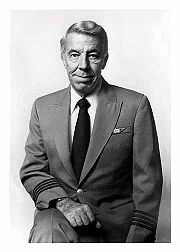
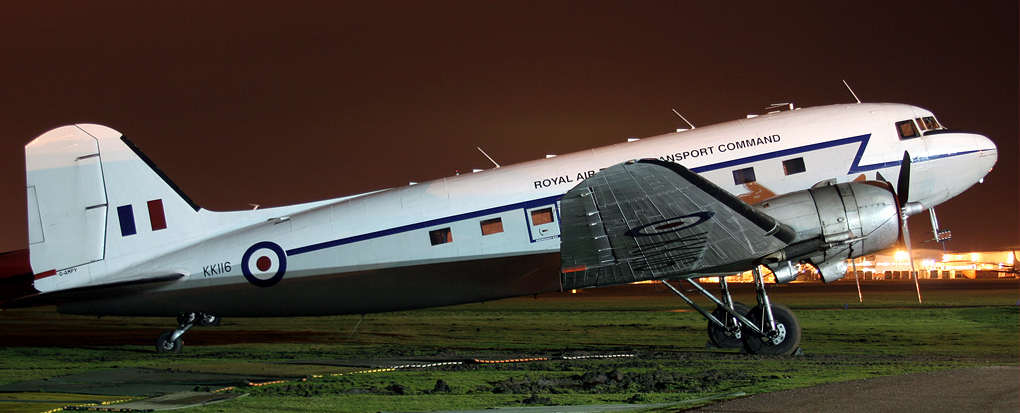

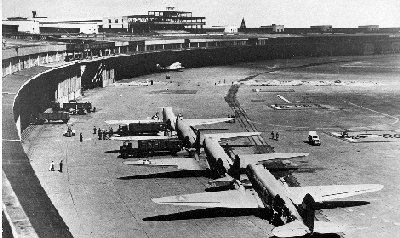 always deice before the other two and she would vibrate and the whole
airplane would shake violently. Then you would run the props to full rpm
then decrease rpm several tines which would usually clear the other two
blades. When the ice came loose it would sound like 50 calibre machine gun
bullets hitting the side of the airplane.
always deice before the other two and she would vibrate and the whole
airplane would shake violently. Then you would run the props to full rpm
then decrease rpm several tines which would usually clear the other two
blades. When the ice came loose it would sound like 50 calibre machine gun
bullets hitting the side of the airplane.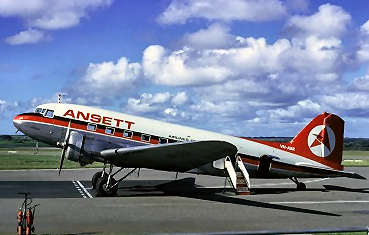 converted to a passenger plane, it introduced the idea of affordable air
travel to a world which had previously seen it as exclusively for the
rich. It made the world a smaller place, gave people the opportunity for
the first time to see previously inaccessible destinations and became a
romantic symbol of travel.
converted to a passenger plane, it introduced the idea of affordable air
travel to a world which had previously seen it as exclusively for the
rich. It made the world a smaller place, gave people the opportunity for
the first time to see previously inaccessible destinations and became a
romantic symbol of travel. 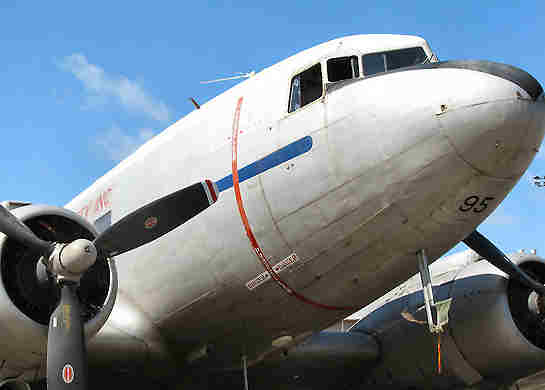 Arriving
at Margaret River, I discovered that the strip in question was barely
1,800 feet long, climbing up the side of a hill, through a corps of trees
at the top, then descended over the other side into a gully. A large, dead
eucalyptus tree was right in the approach path and the gap between the
trees at the top was so narrow, I was not sure if the Gooney’s wings would
fit through. After a number of gradually lower passes, it seemed that we
could fit through, with about a 10 foot clearance on the right hand wing.
Biting the bullet, I put the old bird down on the ground, and pulled to a
halt just past the trees at the top of the hill. Because of our buzzing
around we had attracted a bit of attention and some folk turned up who
happened to be the OC's friends. They were a bit amazed to see the Gooney
on the crop duster strip, and asked if there was anything they could do to
help the situation.
Arriving
at Margaret River, I discovered that the strip in question was barely
1,800 feet long, climbing up the side of a hill, through a corps of trees
at the top, then descended over the other side into a gully. A large, dead
eucalyptus tree was right in the approach path and the gap between the
trees at the top was so narrow, I was not sure if the Gooney’s wings would
fit through. After a number of gradually lower passes, it seemed that we
could fit through, with about a 10 foot clearance on the right hand wing.
Biting the bullet, I put the old bird down on the ground, and pulled to a
halt just past the trees at the top of the hill. Because of our buzzing
around we had attracted a bit of attention and some folk turned up who
happened to be the OC's friends. They were a bit amazed to see the Gooney
on the crop duster strip, and asked if there was anything they could do to
help the situation.